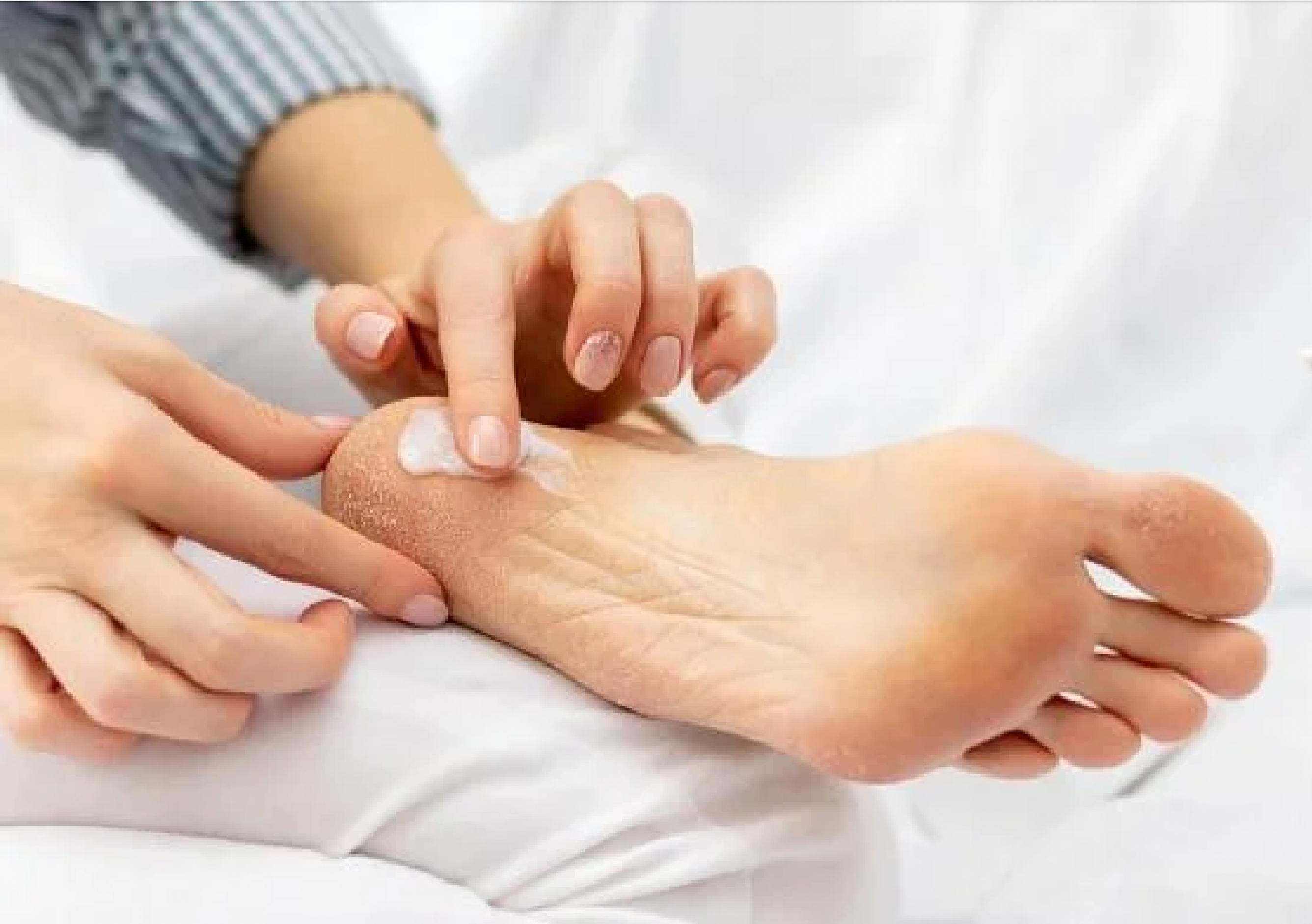The Secret to Soft and Smooth Feet: Why UREA Cream is Your Essential Footcare Product!
Are your feet feeling rough and calloused, especially during the dry winter months? No worries, mate! There's a secret weapon in the world of footcare that can give you the soft and smooth feet you've always wanted: UREA. In this article, we'll explore the benefits of urea cream, how it works, and why it's an absolute must-have for your footcare routine. Get ready to say goodbye to cracked feet and hello to the feet of your dreams!
What is Urea?
Urea is a natural compound found in our bodies, plants, and animals. It's a colourless, odourless, and highly soluble substance. Skincare experts have been using urea in moisturisers, lotions, and creams for yonks. It's also a popular ingredient in footcare products that aim to exfoliate and moisturise the skin.
How Does Urea Cream Work?
Urea cream is a true-blue tool for transforming your feet. It gently exfoliates the top layer of dead skin cells, revealing the softer and smoother skin underneath. By breaking down the protein keratin that forms the outer layer of your skin, urea cream eliminates rough and calloused areas while smoothing out dry patches. Additionally, it attracts moisture to the skin, preventing cracking and dryness. Unlike traditional moisturisers, urea cream not only prevents water loss but also allows moisture to penetrate the cells.
The Benefits of Urea Creams for Footcare
Using urea cream on your feet offers a range of ripper benefits:
-
Exfoliates Dead Skin Cells: Urea cream effectively removes rough and calloused areas by exfoliating the top layer of dead skin cells, leaving your feet smoother and softer.
-
Moisturises Dry Skin: With its humectant properties, urea cream attracts and retains moisture, preventing cracking, dryness, and flakiness on your feet.
-
Heals Cracked Heels: Urea cream can help heal cracked heels by softening the skin and promoting the healing process.
-
Improves Dermatitis, Psoriasis, and Other Skin Conditions: By exfoliating and moisturising the skin, urea cream improves the overall health of your feet and helps alleviate issues like flaking, dryness, and cracking.
Urea Cream vs. Other Footcare Products
While urea cream is highly effective, it's essential to understand its advantages over other footcare products:
-
Urea Cream vs. Foot Scrubs: Urea cream provides gentle exfoliation without causing any damage to the skin, unlike harsh and abrasive foot scrubs.
-
Urea Cream vs. Foot Masks: While foot masks focus on hydration and moisturisation, they lack the exfoliating properties that urea cream offers and cannot effectively rehydrate the skin from the cellular level.
-
Urea Cream vs. Regular Moisturisers: Traditional moisturisers create a barrier on the skin's surface, preventing water loss. However, they lack are very thin, which means they are made of mostly water and will not effectively moisturise the thicker skin like that on the feet.
How to Choose the Right Urea Cream for Your Feet
When it comes to selecting the right urea cream for your footcare needs, there are a few important factors to consider. By keeping these factors in mind, you can ensure that you choose a product that is effective and suits your specific requirements:
1. Urea Concentration
The concentration of urea in the cream plays a crucial role in its effectiveness. Look for a cream that contains at least 10% urea. This concentration is known to provide noticeable results for most individuals looking for a bit of added moisture. 10% urea cream can be great to moisturise the tops of the thinner skin on the tops of the feet and legs. However, if you have more severe foot issues or thick calluses, cracking heels or rough soles of the feet, you may opt for a higher concentration, such as 25% or 30%.
2. Additional Ingredients
Some urea creams may include additional ingredients that enhance their exfoliating and moisturizing properties. For example, creams with alpha-hydroxy acids or salicylic acid can provide enhanced exfoliation benefits. However, it's essential to consider your skin type and any known sensitivities or allergies to ensure the additional ingredients will not cause any adverse reactions. If you have sensitive skin, look for a fragrance-free and hypoallergenic cream.
Glycerin is a common ingredient used in all moisturisers. It acts as a humectant, drawing moisture from the atmosphere and adding to the beneficial effects of urea. Look for a urea cream that includes glycerin to further enhance its hydrating properties.
3. Formulation and Texture
Consider the formulation and texture of the urea cream. Some creams come in a thick, cream-based form, while others may be in a lighter lotion or spray form. Choose a formulation that you find easy to apply and comfortable on your feet. For targeted application, a spray can be useful, especially for rough, calloused areas.
Recommended Urea Cream Products
Based on our research and customer reviews, here are some recommended urea cream products that have gained popularity for their effectiveness in footcare:
Luxe 30 - 150g
- Luxe 30 is a 30% concentration urea cream formulated to provide hydration and exfoliation. With its tropical coconut scent, it offers a luxurious footcare experience while softening rough skin and calluses.
Urea 25% Cream - 100g

- Urea 25 Cream is a milder yet effective option for those seeking noticeable changes in foot skin moisturisation. It can be used all over the feet, making it a versatile choice.
Urea 35% Spray - 125ml

- Urea 30 Spray is a potent urea formula in a convenient spray form. It is ideal for targeting rough, calloused skin, especially on the heels. The spray application allows for easy and targeted use.
How to Use Urea Cream in Your Footcare Routine
Now that you understand the benefits of urea cream, let's talk about how to incorporate it into your footcare routine. Follow these simple steps for the best results:
-
Cleanse Your Feet: Start by washing your feet with warm water and a gentle soap. Pat them dry with a soft towel.
-
Apply Urea Cream: Take a small amount of urea cream and massage it into your feet, focusing on rough and calloused areas.
-
Massage and Absorb: Gently massage the cream into your skin using circular motions. Allow the cream to fully absorb into the skin before putting on socks or shoes.
-
Frequency: For optimal results, use urea cream on a daily basis. Incorporate it into your morning or evening routine, or both if desired.
-
Leave covered or uncovered: To enhance the moisturising effects of the cream, wear breathable cotton socks after applying the cream. This helps to retain moisture and keeps your feet comfortable. However, this step is optional.
- Stay Consistent: Consistency is key when using urea cream. Make it a habit to use it regularly to maintain the softness and smoothness of your feet.
Additional Footcare Tips for Soft and Smooth Feet
In addition to using urea cream, there are several other footcare tips you can follow to maintain soft and smooth feet. Incorporate these practices into your routine for optimal foot health:
1. Wear Comfortable Shoes
Choosing the right footwear is essential for foot health. Opt for shoes that provide adequate support and comfort. Ill-fitting or tight shoes can lead to calluses and rough spots on your feet. Consider using closed shoes instead of open-back styles if you're experiencing excessive dryness or cracking on your heels.
2. Regular Exfoliation
In addition to the exfoliating properties of urea cream, regular exfoliation can further promote soft and smooth feet. You can use a foot file, pumice stone, or allow you podiatrist to use an exfoliating disc to gently remove dead skin cells and rough patches. Be cautious not to over-exfoliate, as it can cause irritation.
3. Soft Insoles
If you spend long hours on your feet or have focal callus on the soles of your feet, consider using memory foam, wool or other cushioned insoles. These can provide additional cushioning, distribute pressure evenly, and reduce the risk of developing calluses or corns.
4. Stay Hydrated
Hydration is crucial for overall skin health, including your feet. Drink an adequate amount of water throughout the day to keep your body well-hydrated. This helps maintain proper skin moisture and prevents dryness.



Share:
The Ultimate Guide to Heel Pain: Tips from a Podiatrist
The Benefits of Laser Therapy for Plantar Fasciitis Pain
2 comments
I went to the dermatologist with potential fungal issues on both my big toes (actually, I have battled these conditions for years, just using regular nail medications and house remedies). The doctor took samples of both nails and sent them to the lab. Results came back showing no onychomycosis (no fungal). He recommends the use of tolcylen and urea cream. Do you know if urea cream has been used to treat nail conditions? Thanks in advance for your prompt reply.
Thank you for this very helpful information will def buy with next shopping trip 😊